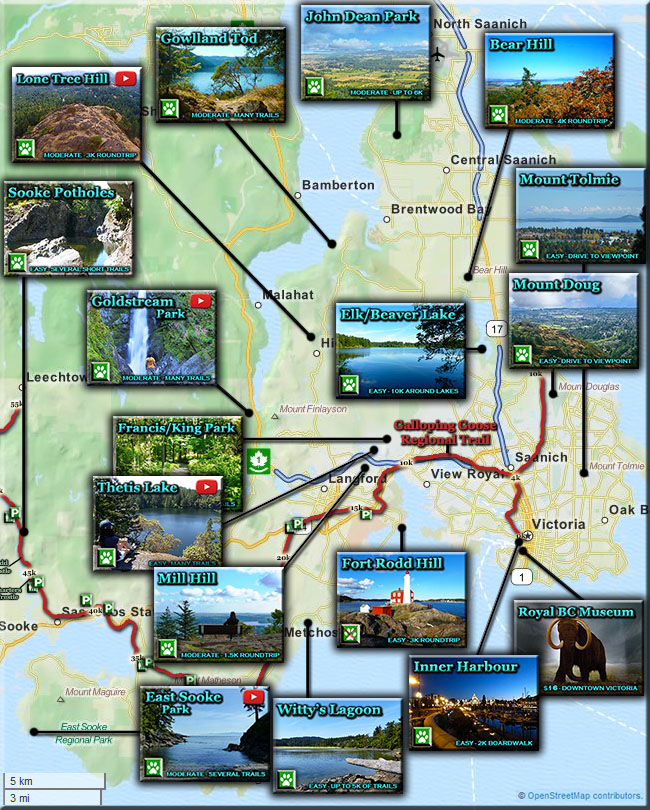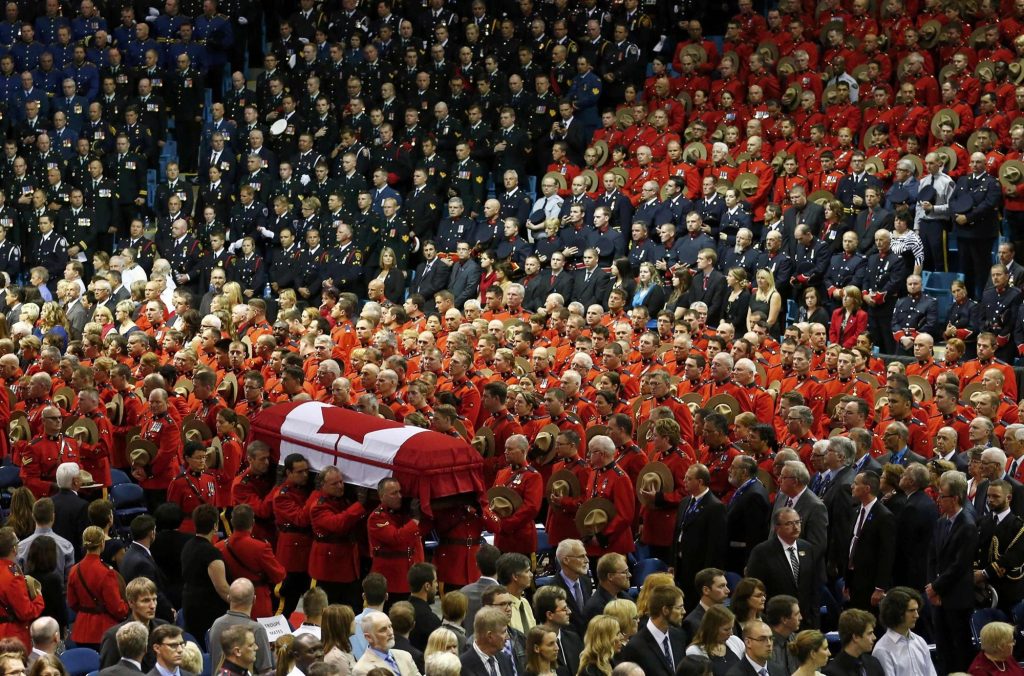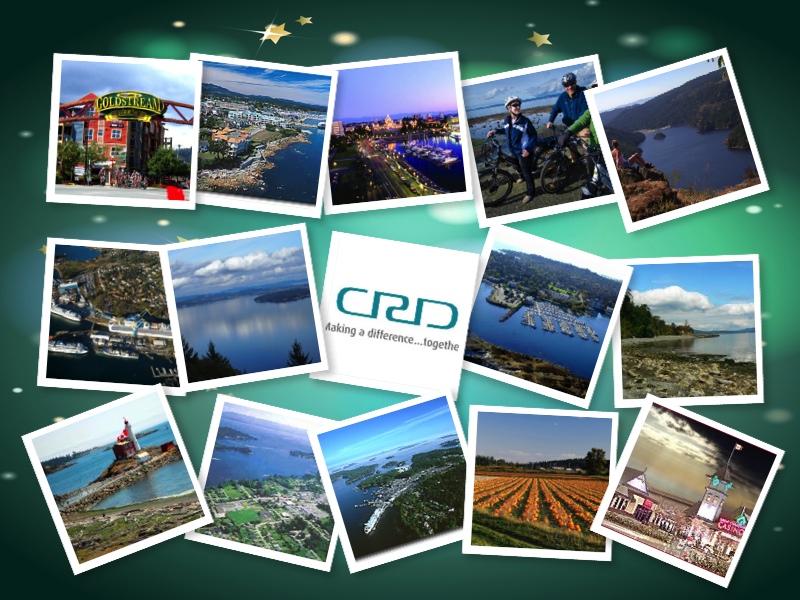Posts Tagged ‘Esquimalt’
Changing the way police do business (Part I)
I don’t think anything demonstrates the solidarity of police officers more than when attending the funeral of a comrade killed in the line of duty. This photo, taken in Moncton in 2014, captures the essence as officers from across Canada and around the world bid farewell to Constables Fabrice Georges Gevaudan, 45, David Joseph Ross, 32, and Douglas James Larche, 40, killed during a shooting spree.
The shields of Central Saanich, Oak Bay, RCMP, Saanich, and Victoria represent the ideals of comrades in arms.
Part II, Comparing differing police cultures
Part III, The past as a guide to the future
Part IV The integration of police services
Link to CBC Podcast: Policing in the CRD
Contact: Harold@mcneillifestories.com
This series of posts will explore some of the past, present, and possible future directions of policing within the Capital Region. It will include discussions about differing police cultures, how they clash and how they work together; and, of course, thoughts about amalgamation, a topic frequently thrust into the public eye.
The Victoria/Esquimalt joint force will be singled out for additional scrutiny, as over the past sixteen years the debate about that merger is also kept in the public eye. While the administrators of the joint force often use the challenges they face as a bargaining chip, it is also used by others to advance an ideological purpose as in a recent letter penned by the President of the Greater Victoria Chamber of Commerce. (1)
Although the post will deal with sensitive areas of police work and police personality, I steadfastly maintain police officers in the CRD and across Canada, are among the very best in the world. Corruption is not a part of our police culture and while it was present in the last century, it was rooted out and systems put in place to ensure it did not return.
When Canadian police officers swear their Oath of Office, they take that oath to heart. What is sometimes lacking is solid, independent oversight of the sort that provides an unbiased assessment of police actions when those actions are called into question be they external or internal.
Also, in press articles, when references are made to ‘dysfunction’ or ‘a broken system’ by the press or others, they are overstating their case. While the challenges to be addressed are difficult, those challenges do not stop our police officers from maintaining an even-handed approach in enforcing the law and helping citizens within our largely peaceful communities.
Part 1: Police solidarity and the push for amalgamation
(667)
Amalgamation in Greater Victoria
Collage (L to R): (T) Langford, Sidney, Victoria, Saanich, Highlands,
(C) Esquimalt, (Malahat), (CRD) Oak Bay, Metchosin,
(B) Colwood, Sooke, North Saanich, Central Saanich, View Royal
(Link to Photo Album)
Link to a 2015 Research Summary on Police Force Size vs Cost/Efficiency
A Literature Review of the Amalgamation of Police Services in Canada
(This is a great summary for those wishing to learn more about whether the police in
Greater Victoria should be amalgamated)
Link to Next Post: Amalgamation in Greater Victoria: Questions and Answers
Link to Most Recent Post Directed at Young People: Local Communities: Keeping the Spirit Alive
The Real Costs of Amalgamation (Time Colonist November 23, 2014)
Note: By pure chance after writing Amalgamation: Question and Answer (link above) during a further search on the subject, an astounding discovery was made: The Bish Papers. These papers, written by a renowned Economist and researcher into Public Administration, stripped away the veil of opinion and conjecture that defined the debate on Amalgamation to this point in time. You may still wish to read this post and as well as the Questions and Answers, however the solid, reliable information comes from the papers written by Dr. Robert L. Bish. Link here to:
Amalgamation: A Search for the Truth
1. October 17, 2014: Introduction to Updated Post
The Capital Regional District: With thirteen members spread over 2,340 km² the CRD is roughly three times the size of Calgary, and somewhat larger than the 1,800 km² GTA (the Amalgamated Six in Toronto). However, our population clearly considerably less.
The CRD (including the Malahat), situated in a secluded corner of the Pacific Northwest, has within its small spread of 593,o59 acres filled with mountains, inlets, bays, forests, farmland, as well as an ocean border and dozens of streams, rivers. and lakes. Almost every home in the region is situated no more than fifteen from long stretches of sun-kissed sand. Looking towards the eastern and southern horizons, you see snow capped  mountains and a sprinkling of smaller islands around which killer whales, sea lions, seals and salmon entertain tens of thousands of visitors each year.
mountains and a sprinkling of smaller islands around which killer whales, sea lions, seals and salmon entertain tens of thousands of visitors each year.
Trail Map: The CRD has a network parks connected by a seemingly endless series of hiking and biking trails that reach to every community from Oak Bay in the south to North Saanich, then west to Metchosin and Sooke. Because of the mild climate these parks and trails are heavily used year-long (double click to open the map).
The mild weather also draws large numbers of Canada’s top athletes to half dozen indoor and outdoor high-performance centers sprinkled across the region.
As part of the infrastructure, the CRD comes equipped with world-class hospitals, schools, colleges, universities, libraries, recreation and sports facilities, entertainment and shopping, virtually everything a growing family might desire, yet there is still plenty of room for singles and seniors who desire to become fully engaged in a healthy lifestyle. In a few words, the Capital Region is a pristine jewel in the Pacific Northwest that draws tourists and new residents from across Canada and around the world. Calgary also does that, but Oil Money is the game that draws the most people to Calgary.
All things being equal, it would be difficult to find anyone in the CRD who would rather live, raise a family or retire elsewhere in Canada. Yet, despite this abundance, one member of the CRD family is constantly agitating to change the governing and administrative structure. To accomplish this they would amalgamate some or all of the parts into one unit with the goal of achieving ‘economies of scale’ and ‘efficiency’. To provide some balance to their negative campaign, this article is being updated.
(7248)


